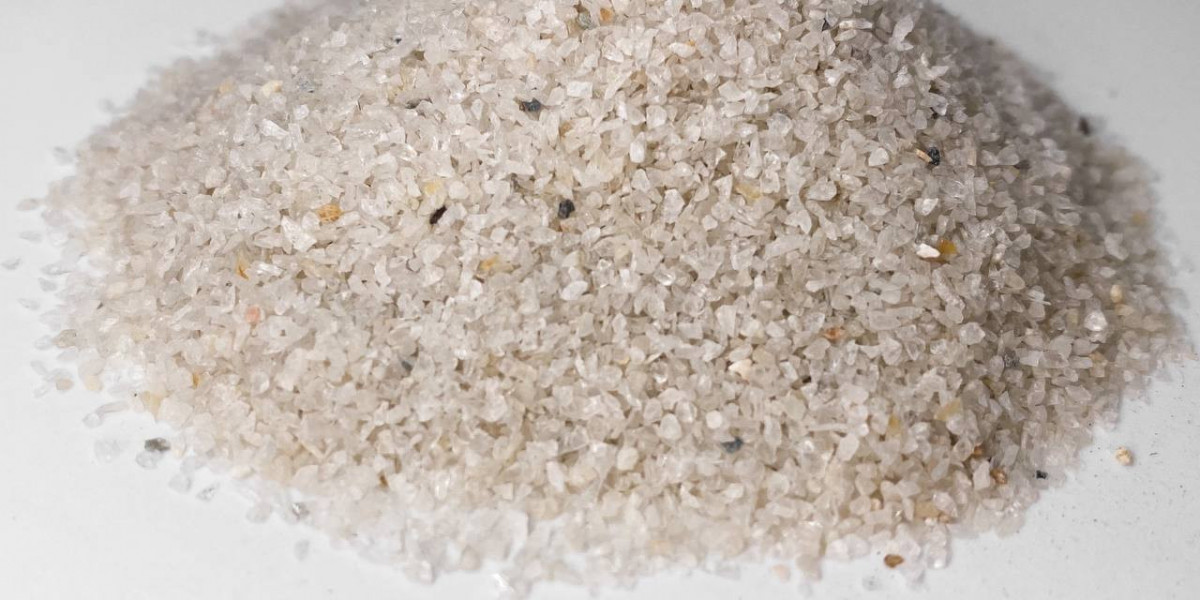The specialty silica market has experienced rapid growth in recent years, driven by increasing demand across various sectors, including construction and infrastructure. Silica has emerged as a key component in the development of sustainable construction materials and infrastructure solutions, offering a range of benefits that align with the growing emphasis on environmental responsibility and resource efficiency. As urbanization continues to expand, the need for greener, more sustainable construction practices has become more critical, and silica's role in this transformation cannot be overstated. This article delves into the latest trends in the specialty silica market and how silica is advancing sustainable construction and infrastructure solutions.
Silica’s Role in Sustainable Construction Materials
The construction industry has long been a major consumer of natural resources, and with rising environmental concerns, there has been a growing push to reduce the industry's carbon footprint. Silica, as a versatile material, has found applications in creating sustainable construction materials, offering an eco-friendly alternative to traditional building products.
One of the most significant ways silica contributes to sustainability in construction is through its incorporation into concrete. Silica is used in the form of silica fume—a byproduct of producing silicon metal or ferrosilicon alloys—which is added to concrete mixes to enhance their durability, strength, and resistance to environmental stressors. The addition of silica fume not only improves the performance of concrete but also reduces the amount of cement required in the mix. Since cement production is one of the largest sources of carbon emissions in the construction industry, substituting a portion of it with silica can significantly reduce the carbon footprint of concrete production.
Furthermore, silica contributes to the creation of self-healing concrete. This advanced technology uses silica nanoparticles to trigger a chemical reaction that fills in cracks and voids in the concrete over time. This innovation not only extends the lifespan of buildings and infrastructure but also reduces the need for costly repairs and maintenance, thus improving the overall sustainability of construction projects.
Silica in Pavement and Road Construction
Another area where silica is playing an essential role is in the construction of pavements and roads. Silica is increasingly being used in asphalt mixes to improve the strength and durability of roads. Adding silica to asphalt increases its resistance to weathering and wear, ensuring that road surfaces last longer and require less frequent maintenance.
As part of sustainable road construction, silica-based materials also help reduce the environmental impact of road building. For example, high-performance asphalt made with silica reduces the need for frequent resurfacing, which minimizes waste and the consumption of additional raw materials. Additionally, the use of silica in road construction contributes to energy-efficient road surfaces that reduce the heat island effect in urban areas by reflecting more sunlight.
Moreover, silica-based additives in asphalt make the material more resistant to oxidation, cracking, and rutting, which are common issues that lead to frequent repairs. By improving the longevity of roads, silica helps reduce the overall environmental impact associated with road construction and maintenance.
Silica in Green Building Certification Systems
In addition to improving the materials used in construction, silica plays a vital role in meeting the sustainability standards set by green building certification programs such as LEED (Leadership in Energy and Environmental Design). These certification systems recognize and reward buildings that meet strict criteria for energy efficiency, water conservation, and the use of sustainable materials.
Silica is recognized as an environmentally friendly material in green building projects, especially when used as a pozzolanic material in concrete and cement production. By reducing the carbon footprint of concrete, silica helps buildings earn points toward LEED certification. Moreover, the incorporation of silica into construction materials enhances the energy efficiency of buildings by improving insulation properties, reducing heating and cooling needs, and lowering overall energy consumption.
In addition to its direct environmental benefits, silica-based materials also contribute to improved indoor air quality. For example, silica nanoparticles are used in coatings and paints to reduce the emission of volatile organic compounds (VOCs), which can negatively impact air quality. These low-VOC coatings are essential in creating healthier living environments and contribute to the sustainability goals of green buildings.
Emerging Trends in Silica-Based Sustainable Construction Technologies
As the construction industry continues to evolve, new trends are emerging that integrate silica into even more advanced sustainable building solutions. One such trend is the development of solar panels and photovoltaic cells, where silica plays an essential role as a primary material in the production of solar cells. The demand for renewable energy is driving the need for solar power technologies, and silica's role in creating high-efficiency solar panels is expected to increase in the coming years.
Additionally, there is growing interest in silica-based insulation materials. Silica aerogels, known for their low thermal conductivity, are being used as high-performance thermal insulators in construction. These lightweight and efficient materials are ideal for improving the energy efficiency of buildings, contributing to the overall sustainability of the construction industry.
Moreover, the use of nanotechnology in silica-based construction materials is on the rise. Nano-silica enhances the mechanical properties of concrete and other materials, making them more durable and resistant to environmental wear. The incorporation of nano-silica in construction materials is expected to drive further innovations in sustainable building technologies.
Conclusion
The specialty silica market is witnessing a transformative shift as silica continues to play an integral role in advancing sustainable construction and infrastructure solutions. From improving the performance of concrete and asphalt to contributing to the creation of energy-efficient buildings and infrastructure, silica is a key enabler of the industry's shift toward sustainability. As demand for green construction solutions grows, silica's versatility, durability, and eco-friendly properties will make it an increasingly vital material in the development of smart cities and sustainable urban landscapes.
With the growing importance of environmental responsibility in construction, the specialty silica market is poised for continued growth. Innovations in silica-based technologies, such as self-healing concrete, nano-silica, and solar technologies, will play a significant role in the future of sustainable building and infrastructure projects, making silica a cornerstone of the industry's transition to a more sustainable future.










